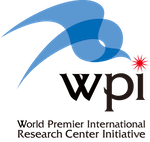WPI-SKCM2 X HiSOR Seminar: Niels Schroeter (Max Planck Institute), From Chiral Electronics to Mottness in Momentum Space
The term chirality is derived from the Greek word for ‘hand’ χειρ (kheir) and describes objects that are distinct from their mirror image. It is long known that chirality plays a crucial role in nature, providing powerful functionality to chiral molecules in living organisms. By extending this concept from the molecular to the solid state, my group aims to uncover new chirality-enabled phenomena that could form the basis for new technologies.
The focus of my talk will be on chiral topological semimetals, an emerging class of quantum materials at the intersection of structural and electronic chirality. These materials can host new fermionic quasiparticles without analogue in high-energy physics (1–4), which carry large and controllable topological charges (5). We have recently demonstrated that these quasiparticles realize an isotropic Weyl-type parallel spin-momentum locking that can be considered the natural counterpart of Rashba spin-orbit coupling (6). Moreover, I will present fingerprints of controllable orbital angular momentum monopoles in these materials (7), which could be exploited in memory devices for field-free switching of magnets with perpendicular magnetic anisotropy.
Time permitting, I will also present our investigation of the origin of the magnetic field-induced (8) and field-free (9) Josephson diode effect. For the latter, we identify a momentum-resolved signature of Mottness that allows us to distinguish band-insulators from unconventional Mott-insulators with an even number of electrons (arXiv:2410.16199)
1. N. B. M. Schröter et al., Nat. Phys. 15, 759–765 (2019).
2. Z. Rao et al., Nature. 567, 496–499 (2019).
3. D. Takane et al., Phys. Rev. Lett. 122, 076402 (2019).
4. D. S. Sanchez et al., Nature. 567, 500–505 (2019).
5. N. B. M. Schröter et al., Science. 369, 179–183 (2020).
6. J. A. Krieger et al., Nat Commun. 15, 3720 (2024).
7. Y. Yen et al., Nat. Phys. (2024) 10.1038/s41567-024-02655-1
8. B. Pal et al., Nat. Phys. 18, 1228–1233 (2022).
9. H. Wu et al., Nature. 604, 653–656 (2022).


